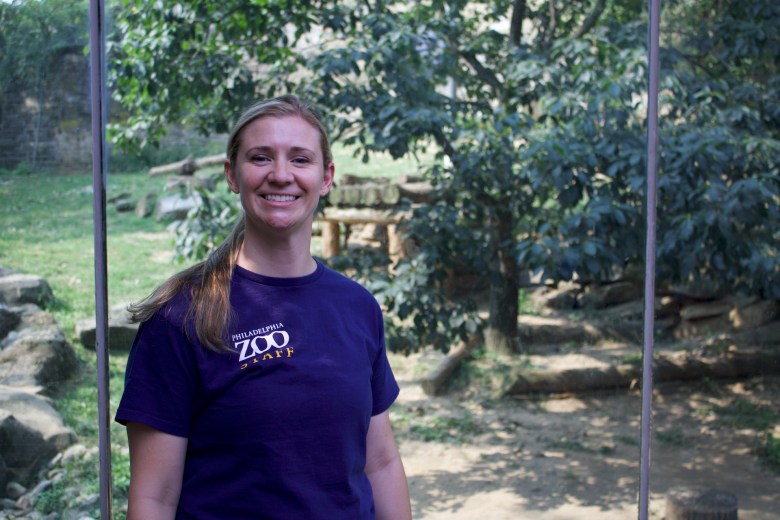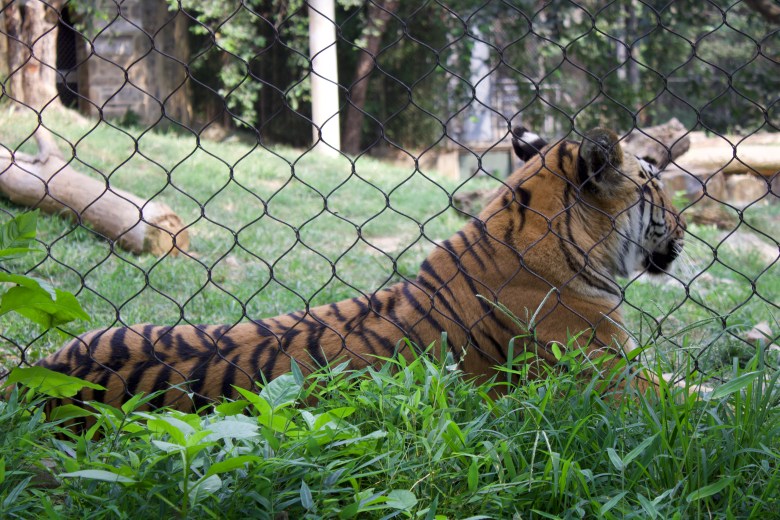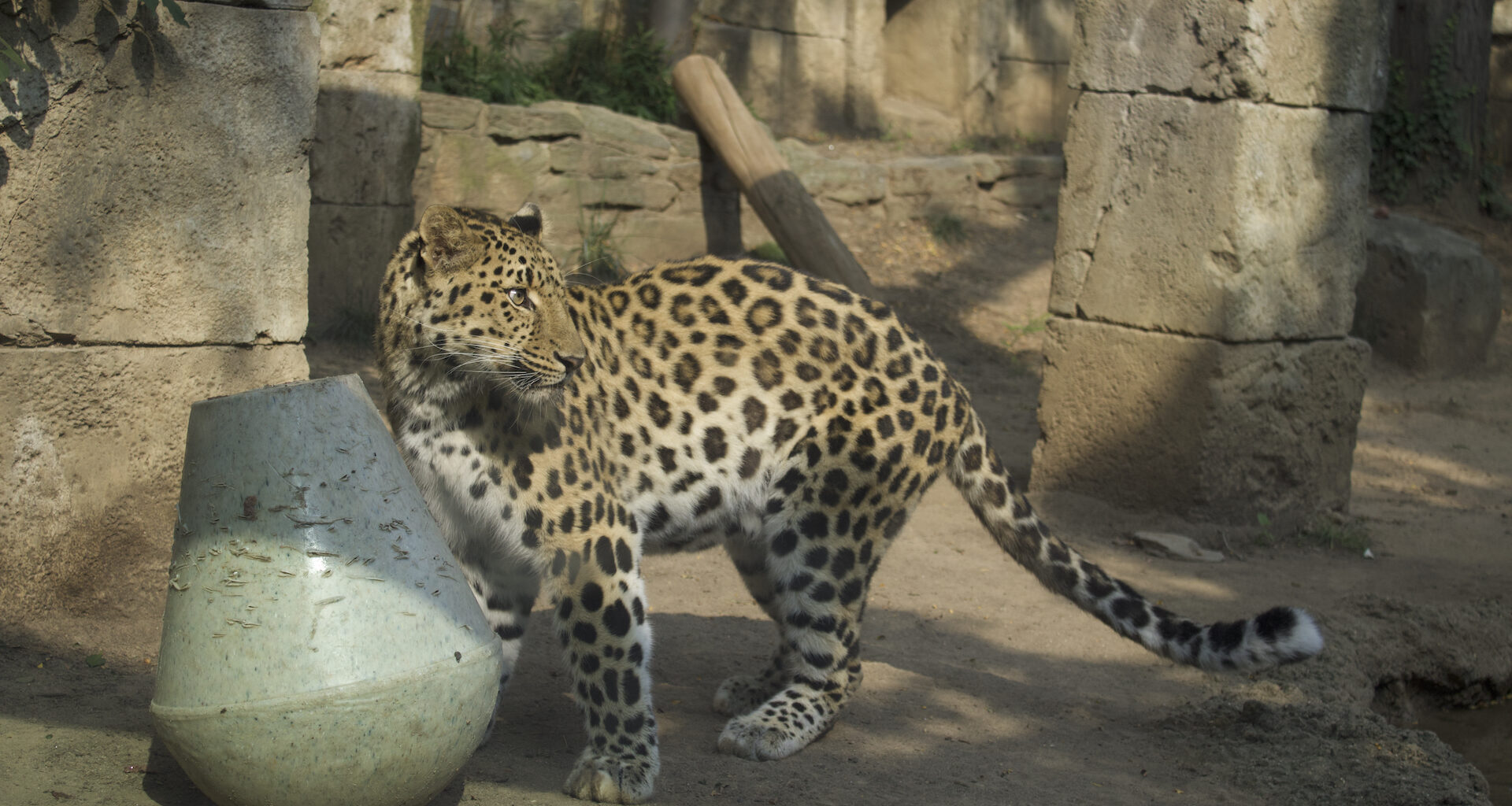If you’ve ever run into the child of an old friend, you know how Jackie Stone feels these days.
Stone is the director of carnivores at the Philadelphia Zoo — and the “child of a friend” isn’t human.
It’s one of two big cats that arrived recently at the zoo — Rory, a 4-year-old Amur tiger. Stone cared for Rory’s father when she worked in Michigan.
The odds of this meeting are exceedingly low. There are only around 300 living Amur tigers in the world.
In fact, Rory and the other addition, an Amur leopard, are both critically endangered and now on exhibit at the zoo, offering a rare glimpse at two of the world’s most elusive big cats.
Stone feels fortunate.
“Amur tigers are my favorite to work with. I feel like they have such big personalities, so I was pretty jazzed about it,” Stone said. “Rory has a little bit of fire to her, like her father, so that’s been fun to see.”
 Jackie Stone has worked with animals for 15 years, as the Philly zoo’s director of carnivores for just six months. (Davis Cuffe/Billy Penn)
Jackie Stone has worked with animals for 15 years, as the Philly zoo’s director of carnivores for just six months. (Davis Cuffe/Billy Penn)
Rory and her transplant partner, Rafferty, an 8-year-old female leopard, arrived at the zoo via a breeding recommendation from the Association of Zoos and Aquariums’ Species Survival Plan Program. The program seeks to protect endangered species, like Amur leopards, which are estimated to have a population of less than 150, from extinction.
Rafferty, whose name translates to “one who possesses prosperity,” gave birth to a litter while at Utah’s Hogle Zoo. Rory was previously at the Toledo Zoo before moving out to Philly.
Both species are native to Russia and Northern China, where poaching, habitat loss and reduced genetic diversity have made them endangered.
“Tiger Love Island”
Once the two cats fully acclimate to their new habitats, the breeding process will begin. Rafferty will be paired with Kira, an 11-year-old Amur leopard also at the zoo. Rory has more choice in the matter, as the zoo has two other male Amur tigers, Wiz and Dimitri.
“We’ve joked that it’s like tiger Love Island,” Stone said.
“She will get to pick a mate, which is kind of awesome for her. But it’s a slow, methodical process.”
Just a minute’s walk away at the zoo, Stone’s staff will slowly introduce Rafferty and Kira in the hopes the two can bear a litter. The breeding process begins by allowing the two to observe each other from a distance, then introducing them through a mesh barrier before finally bringing them together in the open.
Assuming the cats do mate, the litters will remain in captivity their whole lives to repopulate and conserve their species.
 Rory (seen here) and Rafferty both eat almost exclusively red meat. No cheesesteaks, despite their new home in Philly. (Davis Cuffe/Billy Penn)
Rory (seen here) and Rafferty both eat almost exclusively red meat. No cheesesteaks, despite their new home in Philly. (Davis Cuffe/Billy Penn)
“We would never release these tigers in the wild, because they don’t even have a habitat,” Stone said. “Amur leopards, they’re critically endangered due largely to deforestation. So it wouldn’t necessarily be fair to them to put them into that situation.”
Stone said the zoo could see tiger and leopard cubs “sometime next year,” if all went well.
Feline familiarity
The cats aren’t the only ones trying to connect at the zoo. Stone said relationship-building with the animals she oversees is her favorite part of the job.
She described Amur tigers like Rory as “sweet.”
“There’s always some sort of barrier between us and them,” Stone said. “But I think it’s really special when you can build a bond with something that big and strong and intense, and then they’re just like the loveliest.”
Stone said tigers show that sweetness by greeting caretakers with a “chuff,” which is the name of an exhale sound that tigers make to greet each other, and rubbing against the mesh barriers that separate caretakers and cats to show affection.
Since Stone and other caretakers must always keep a barrier between themselves and the big cats, their bond is built primarily through feeding.
Once the bond is formed, tigers and leopards can be taught to display their paws or stick their tails through mesh barriers for medical examinations or to draw blood.
The cats primarily eat red meat and are sometimes given rabbits. And, no, the zoo is not requesting pets to feed to the cats, unlike a Danish zoo whose Facebook post went viral this week for asking people to donate unwanted pets for feeding.
